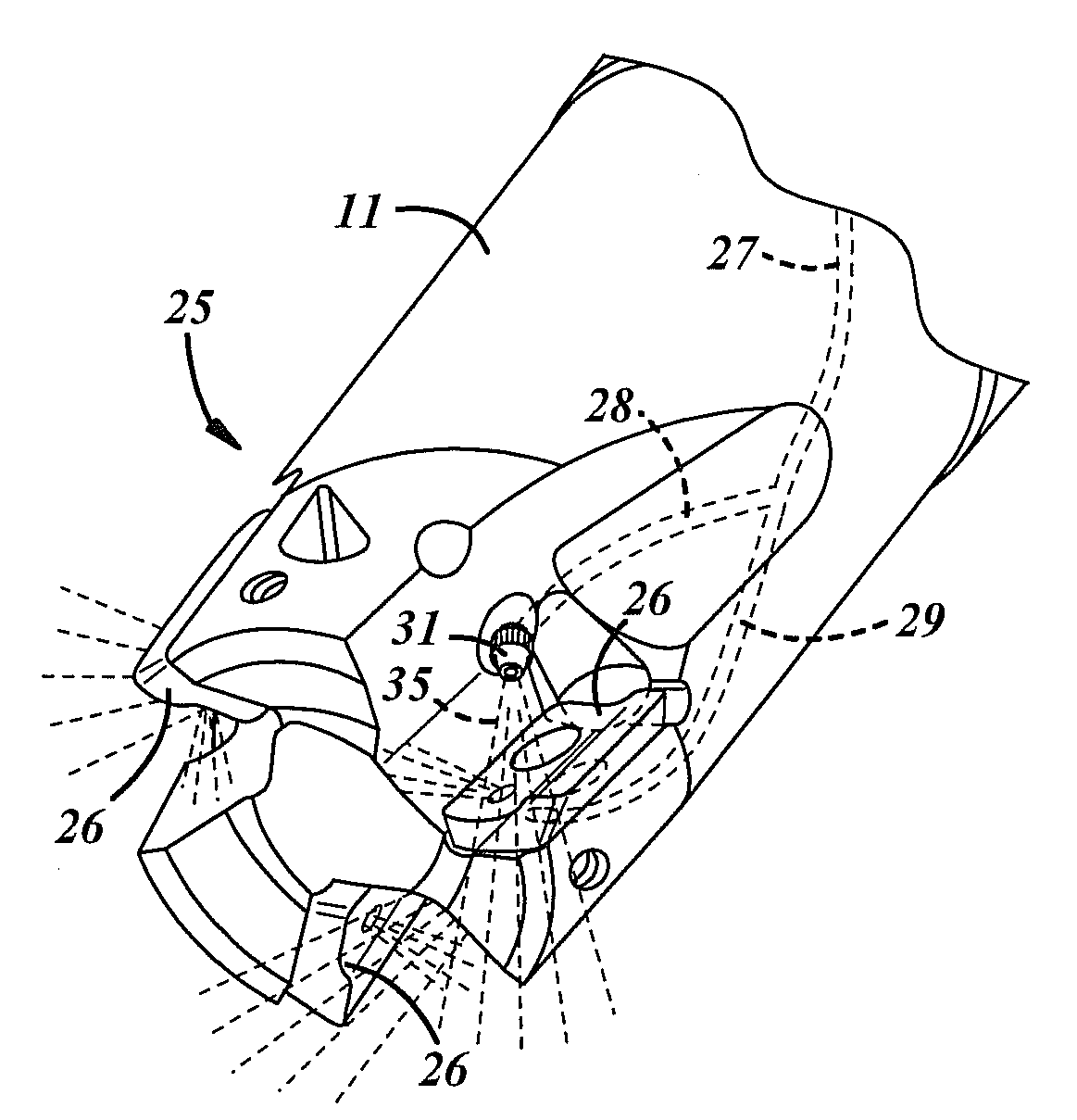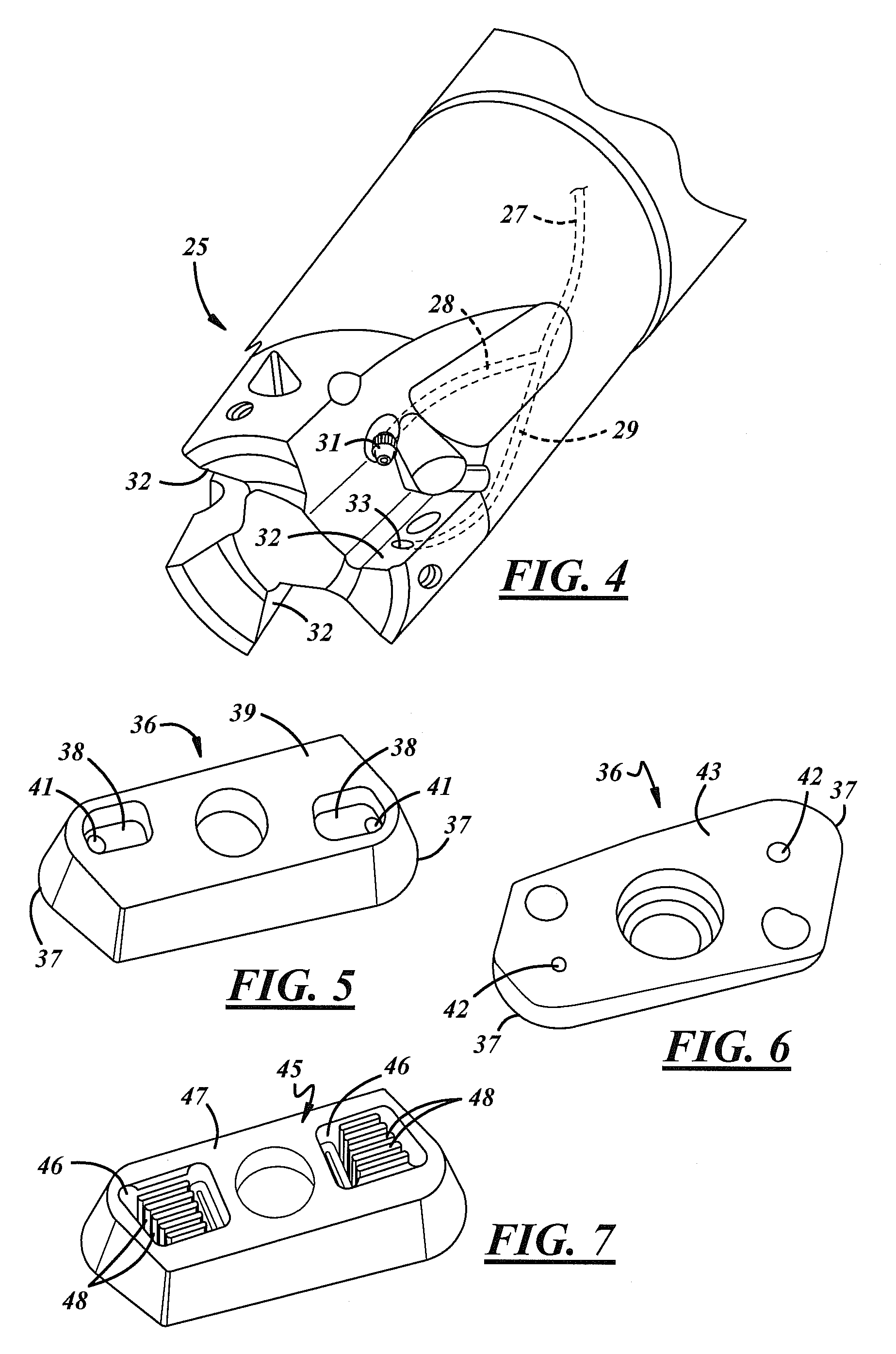Indirect Cooling of a Rotary Cutting Tool
a technology of cutting tool and cooling fluid, which is applied in the direction of shaping cutter, manufacturing tools, transportation and packaging, etc., can solve the problems of dermatitis and respiratory diseases, additives in cutting fluid may be carcinogenic, and the cost does not account for the health risks to which workers are exposed, so as to achieve the effect of easy integration with current manufacturing operations
- Summary
- Abstract
- Description
- Claims
- Application Information
AI Technical Summary
Benefits of technology
Problems solved by technology
Method used
Image
Examples
Embodiment Construction
[0022]FIG. 1 shows the end of a rotary cutting tool, such as an end mill, generally designated by the reference numeral 10. An insert 12 may be secured in a pocket 14 in the end of the tool body 11 by a screw 13. The insert 12 has a cutting edge 15 that wraps around the corner of the insert. The particular milling cuter shown has two pockets 14 for receiving two inserts 12 that are disposed 180 degrees from one another, although end mills having pockets for receiving other numbers of inserts are well known in the art. Also, fluted end mills that have no inserts but have integrally formed flutes for cutting the workpiece, or cutting elements that are brazed or otherwise attached to the cutter body, are also well known in the art. Those practiced in the art of machining will appreciate that the indirect cooling system as described herein can apply to any rotating tool, with integral or attached cutting edges, or with inserts.
[0023]As shown in FIG. 1, the insert 12 is cooled indirectly...
PUM
| Property | Measurement | Unit |
|---|---|---|
| flow rate | aaaaa | aaaaa |
| temperature | aaaaa | aaaaa |
| temperature | aaaaa | aaaaa |
Abstract
Description
Claims
Application Information
 Login to View More
Login to View More - R&D
- Intellectual Property
- Life Sciences
- Materials
- Tech Scout
- Unparalleled Data Quality
- Higher Quality Content
- 60% Fewer Hallucinations
Browse by: Latest US Patents, China's latest patents, Technical Efficacy Thesaurus, Application Domain, Technology Topic, Popular Technical Reports.
© 2025 PatSnap. All rights reserved.Legal|Privacy policy|Modern Slavery Act Transparency Statement|Sitemap|About US| Contact US: help@patsnap.com



